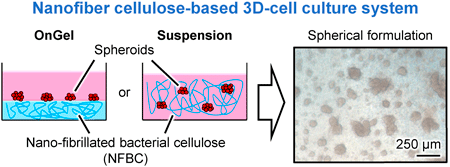-
Shunsuke Akagi
†
Department of Pharmacokinetics and Biopharmaceutics, Institute of Biomedical Sciences, Tokushima University, Tokushima 770–8505, Japan
-
Hidenori Ando
†
責任著者
Department of Pharmacokinetics and Biopharmaceutics, Institute of Biomedical Sciences, Tokushima University, Tokushima 770–8505, Japan Innovative Research Center for Drug Delivery System, Institute of Biomedical Sciences, Tokushima University, Tokushima 770–8505, Japan
-
Cristina Nana Amorim Matsuo
Department of Pharmacokinetics and Biopharmaceutics, Institute of Biomedical Sciences, Tokushima University, Tokushima 770–8505, Japan
-
Kenji Tajima
Faculty of Engineering, Hokkaido University, Sapporo 060–8628, Japan
-
Haruka Takata
Department of Pharmacokinetics and Biopharmaceutics, Institute of Biomedical Sciences, Tokushima University, Tokushima 770–8505, Japan Innovative Research Center for Drug Delivery System, Institute of Biomedical Sciences, Tokushima University, Tokushima 770–8505, Japan
-
Tokuo Matsushima
Kusano Sakko Inc., Hokkaido 067–0063, Japan.
-
Takatomo Kusano
Kusano Sakko Inc., Hokkaido 067–0063, Japan.
-
Tatsuhiro Ishida
Department of Pharmacokinetics and Biopharmaceutics, Institute of Biomedical Sciences, Tokushima University, Tokushima 770–8505, Japan Innovative Research Center for Drug Delivery System, Institute of Biomedical Sciences, Tokushima University, Tokushima 770–8505, Japan
-
著者の貢献†Shunsuke Akagi, Hidenori Andoは本研究に等しく貢献した。
電子付録
2025 年 48 巻 1 号 p. 23-32
- Published: 2025/01/24 Received: 2024/11/26 Released on J-STAGE: 2025/01/24 Accepted: 2024/12/02 Advance online publication: - Revised: -
(EndNote、Reference Manager、ProCite、RefWorksとの互換性あり)
(BibDesk、LaTeXとの互換性あり)


